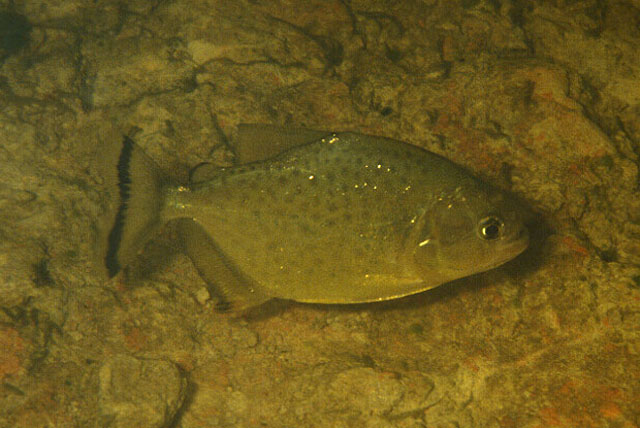| Serrasalmidae () |
| 26 cm TL (male/unsexed); max.weight: 477.0 g |
|
pelagic |
| South America: Amazon and Paraguay-Paraná River basins (Ref. 39031). Recorded from the Uruguay River (Ref. 79585). |
|
Dorsal soft rays (total): 16-16; Anal soft rays: 33-35; Vertebrae: 36-36 |
| Occurs usually in small groups of up to 20 individuals which appear to have a definite range within a pond or a creek. Observed to be active mainly during the day. Larger fish extend their foraging until about 9 at night. where it stays in the shallows near the bottom, sheltered among vegetation (Ref. 9080). Larvae and juveniles hide and feed within the root tangle of water hyacinths, which also act as a dispersal agent during floods (Ref. 40399). Larvae feed on
microscopic crustaceans and small aquatic insects; very small size juveniles (about 1.2 cm)
already clip fins of other fishes (Ref. 40399). Juveniles and adults feed mostly on fins and muscle portions of fishes (Ref. 9080, 40398). Adults may scavenge on dead mammals, including humans (Ref. 40400). Attacks on humans with bite outbreaks may occur in dammed
portions of rivers during the breeding season, related to brood protection by the spawning
adults (Ref. 50802). |
|
Not Evaluated
(Ref. 96402)
|
| traumatogenic |
|
Source and more info: www.fishbase.org. For personal, classroom, and other internal use only. Not for publication.
Page created by Jen, 05.08.02,
php script by kbanasihan 06/09/2010 ,
last modified by
dsantos, 20/08/10

